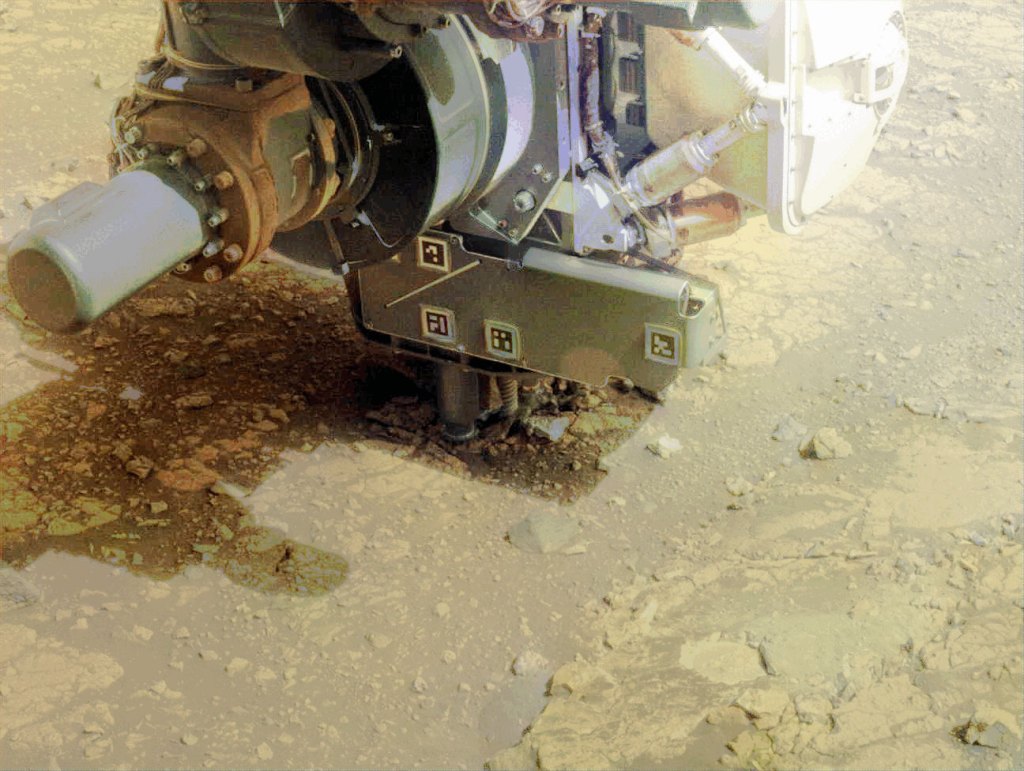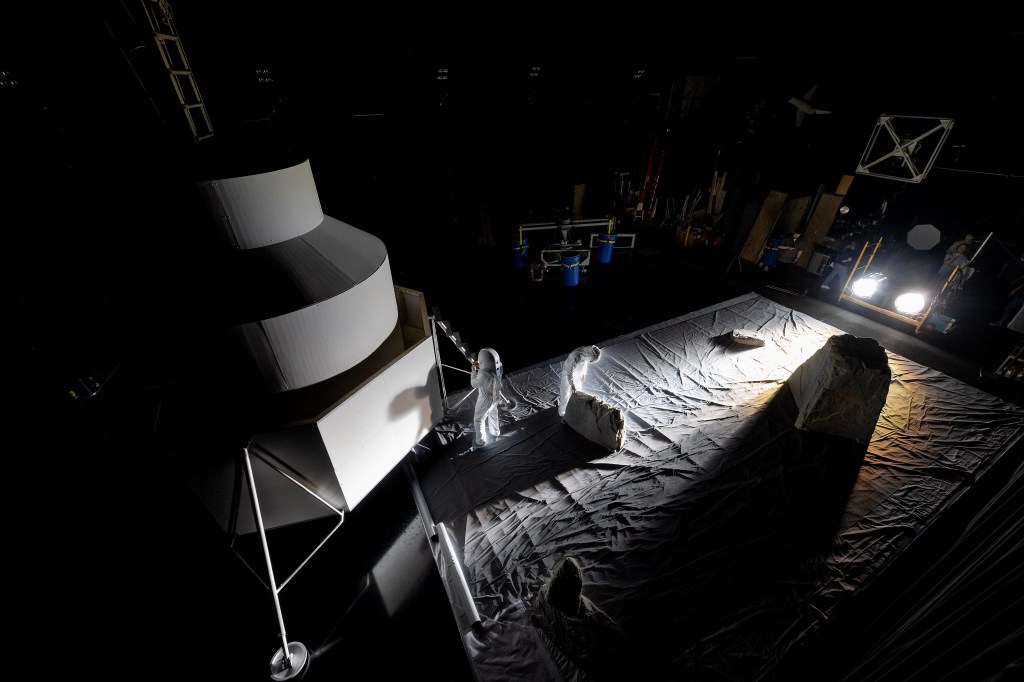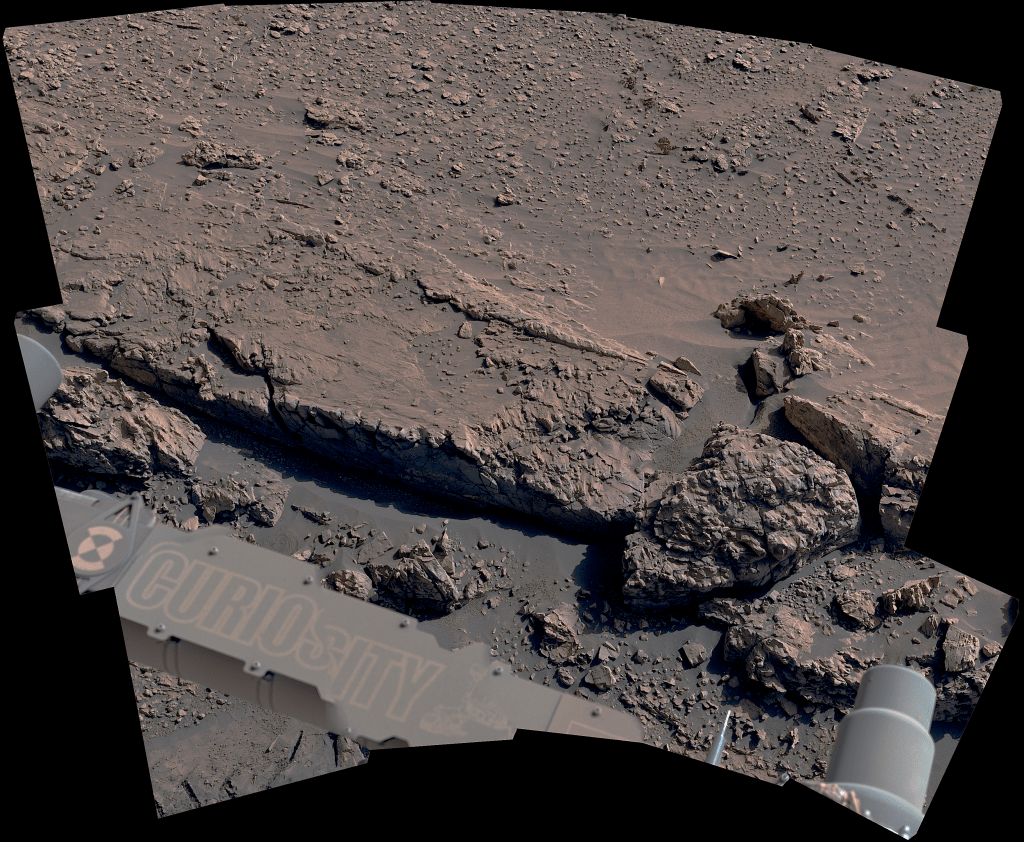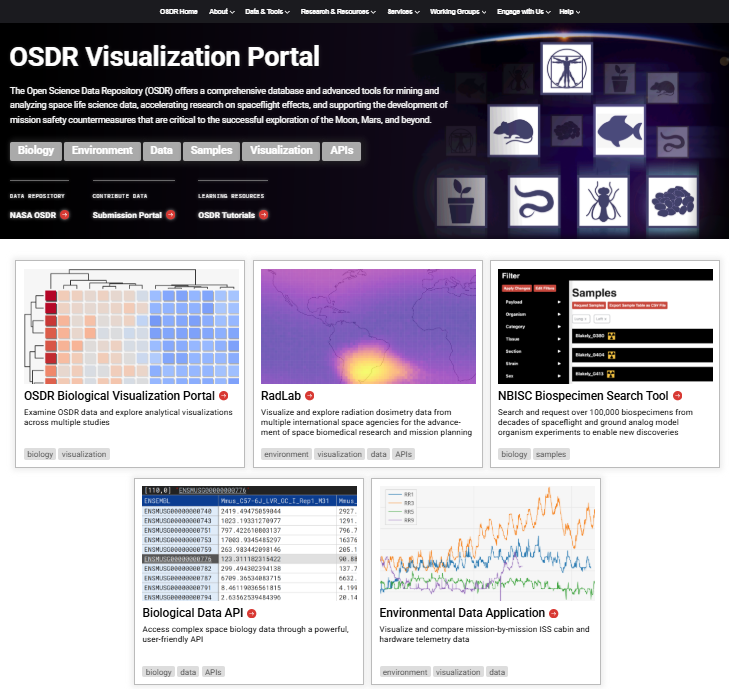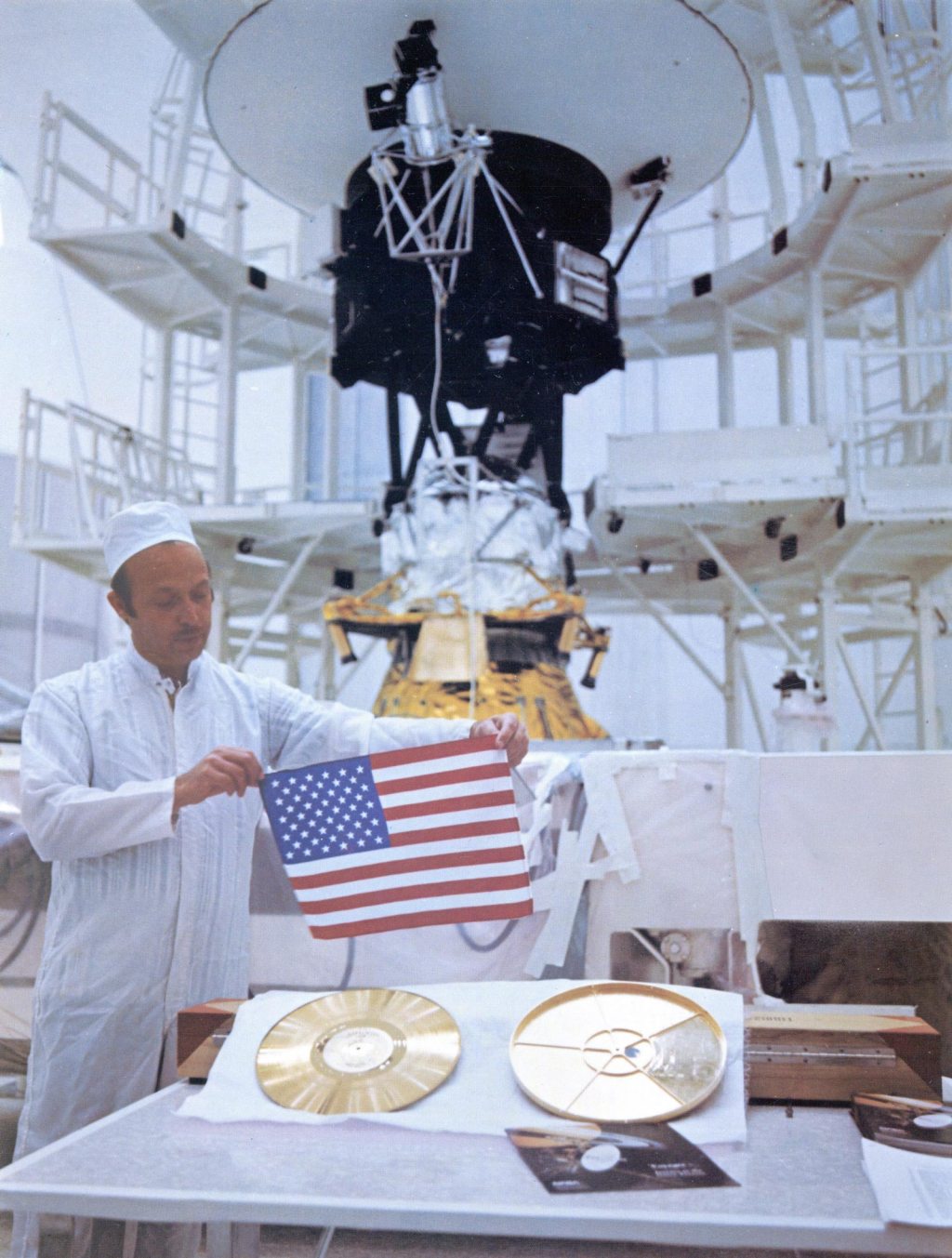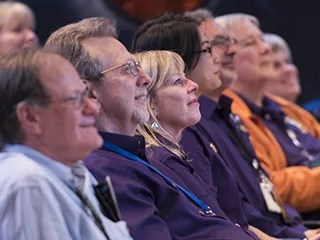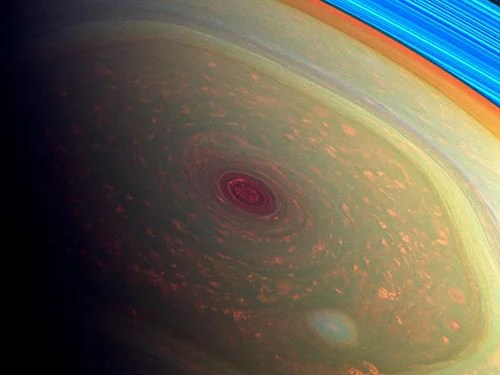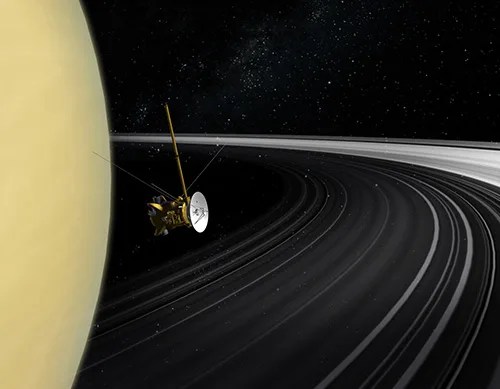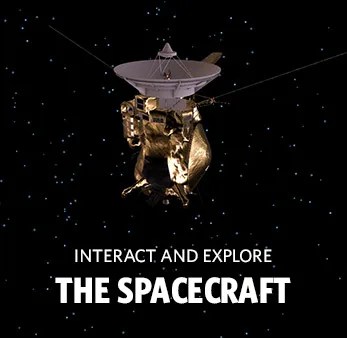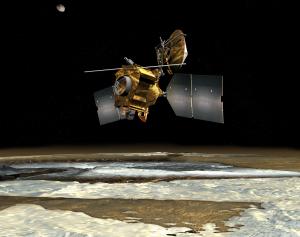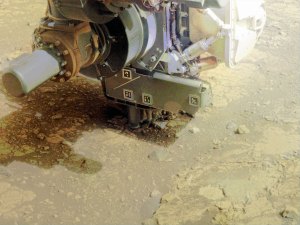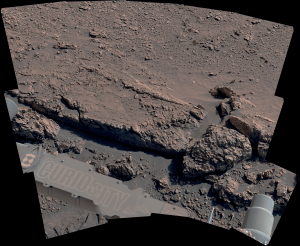On Sept. 15, NASA's Cassini spacecraft will complete its remarkable story of exploration with an intentional plunge into Saturn's atmosphere, ending its mission after nearly 20 years in space.
Updated at 3:30 p.m. PDT on Sept. 12, 2017
On Sept. 15, NASA's Cassini spacecraft will complete its remarkable story of exploration with an intentional plunge into Saturn's atmosphere, ending its mission after nearly 20 years in space. News briefings, photo opportunities and other media events will be held at NASA's Jet Propulsion Laboratory in Pasadena, California, and will air live on NASA Television and the agency's website.
Launched in 1997, Cassini arrived in orbit around Saturn in 2004 on a mission to study the giant planet, its rings, moons and magnetosphere. In April of this year, Cassini began the final phase of its mission, called its Grand Finale -- a daring series of 22 weekly dives between the planet and its rings. On Sept. 15, Cassini will plunge into Saturn, sending new and unique science about the planet's upper atmosphere to the very end. After losing contact with Earth, the spacecraft will burn up like a meteor. This is the first time a spacecraft has explored this unique region of Saturn -- a dramatic conclusion to a mission that has revealed so much about the ringed planet.
Cassini flight controllers will monitor the spacecraft's final transmissions in JPL Mission Control. Interviews with mission engineers and scientists will be available for media.
Cassini Media Events and Schedule
(The NASA TV news conferences will be available on the agency’s website, and times and details are subject to change).
NASA held a media teleconference on Aug. 29 to preview activities during Cassini's final two weeks. The event, which is archived, included these panelists:
- Curt Niebur, Cassini program scientist, NASA Headquarters, Washington
- Earl Maize, Cassini project manager, JPL
- Linda Spilker, Cassini project scientist, JPL
Wednesday, Sept. 13
- 1 p.m. EDT -- News conference from JPL with a detailed preview of final mission activities (also available on NASA TV and online). Panelists will include:
o Jim Green, director of Planetary Science, NASA Headquarters, Washington
o Earl Maize, Cassini project manager, JPL
o Linda Spilker, Cassini project scientist, JPL
o Hunter Waite, team lead for Cassini's Ion and Neutral Mass Spectrometer, Southwest Research Institute, San Antonio
- 11:30 a.m. and 2:30 p.m. PDT -- Media tours of Mission Control (each group tour will last at least half an hour)
Thursday, Sept. 14
- 10 a.m. to 3 p.m PDT -- NASA Social -- onsite gathering for 25 pre-selected social media followers (JPL-accredited media may also attend). Events will include a tour, and a speaker program from 1 to 2 p.m. PDT that will be carried on NASA TV and online.
- 11:30 a.m. and 2:30 p.m. PDT -- Media tours of Mission Control (each group tour will last at least half an hour)
- About 8 p.m. PDT -- Final downlink of images expected to begin (posted online at https://saturn.jpl.nasa.gov/galleries/raw-images/)
Friday, Sept. 15: End of Mission
- 7 to 8:30 a.m. EDT -- Live commentary on NASA TV and online. In addition, an uninterrupted, clean feed of cameras from JPL Mission Control, with mission audio only, will be available during the commentary on the NASA TV Media Channel.
- About 8 a.m. EDT -- Expected time of last signal and science data from Cassini
- 9:30 a.m. EDT -- Post-event news conference at JPL (on NASA TV and online)
- Participants include:
- Thomas Zurbuchen, associate administrator for the Science Mission Directorate, NASA Headquarters, Washington
- Michael Watkins, director, JPL
- Earl Maize, Cassini project manager, JPL
- Linda Spilker, Cassini project scientist, JPL
- Julie Webster, spacecraft operations chief, JPL
To participate in either news conference by phone, media must contact Andrew Good at andrew.c.good@jpl.nasa.gov or 818-393-2433 by one hour before each of the briefings’ start time. To attend the Sept. 13 and Sept. 15 news conferences in person, media must have credentials arranged in advance. Media and the public also may ask questions during the news conferences using #askNASA.
To watch the news conferences and commentary online, visit:
http://www.youtube.com/nasajpl/live
For media, there are additional streaming links at:
https://saturn.jpl.nasa.gov/mission/grand-finale/for-media/
Newsroom
The newsroom hours are:
Wednesday, Sept. 13: 8 a.m. to 4 p.m. PDT
Thursday, Sept. 14: 8 a.m. to 4 p.m. PDT
Friday, Sept. 15: 3 a.m. to 3 p.m. PDT
Interview Opportunities
For interviews with mission team members at JPL, media with pre-arranged JPL credentials may schedule interviews in the JPL newsroom or by calling 818-354-5011. Offsite media may schedule phone or Skype interviews by calling 818-354-5011.
JPL Tours
On Sept. 13, tours of JPL mission control are available to media. Space is limited and will be filled on a first-come, first-served basis. Media wishing to join a tour must have a JPL media credential and must make a reservation with the JPL Media Relations Office at 818-354-5011, or sign up in person at the JPL Newsroom.
Resources
A Grand Finale toolkit is available at:
https://saturn.jpl.nasa.gov/mission/grand-finale/overview/
A press kit is available, along with livestream links for various Cassini events, at:
https://saturn.jpl.nasa.gov/mission/grand-finale/for-media/
Video for the Cassini mission is available for download at:
https://vimeo.com/album/4649677
The Cassini-Huygens mission is a cooperative project of NASA, ESA (European Space Agency) and the Italian Space Agency. JPL manages the mission for NASA's Science Mission Directorate. JPL designed, developed and assembled the Cassini orbiter.
Follow the mission on social media at:
http://www.twitter.com/CassiniSaturn
https://www.facebook.com/NASACassini
Media Contacts
Dwayne Brown / Laurie Cantillo
NASA Headquarters, Washington
202-358-1726 / 202-358-1077
dwayne.c.brown@nasa.gov / laura.l.cantillo@nasa.gov
Preston Dyches
Jet Propulsion Laboratory, Pasadena, Calif.
818-354-7013
preston.dyches@jpl.nasa.gov
Where to Watch Cassini's Finale
NASA is providing many ways to follow along as Cassini makes its final plunge into Saturn, ending its 13 year mission at Saturn.
Why Cassini Matters
NASA’s Cassini spacecraft and ESA’s Huygens probe expanded our understanding of the kinds of worlds where life might exist and eight more reasons the mission changed the course of planetary exploration.
Nine Reasons Cassini-Huygens Matters
Grand Finale Resources
A collection of graphics, documents, videos and other resources that showcase the Cassini mission's Grand Finale on Sept. 15, 2017.
Frequently Asked Questions
What day will the mission end (September, 15, 2017)? Did we always plan to plunge into Saturn? What will Cassini's final moments be like? What will we see? Get answers to these questions and many more in our FAQ section.

